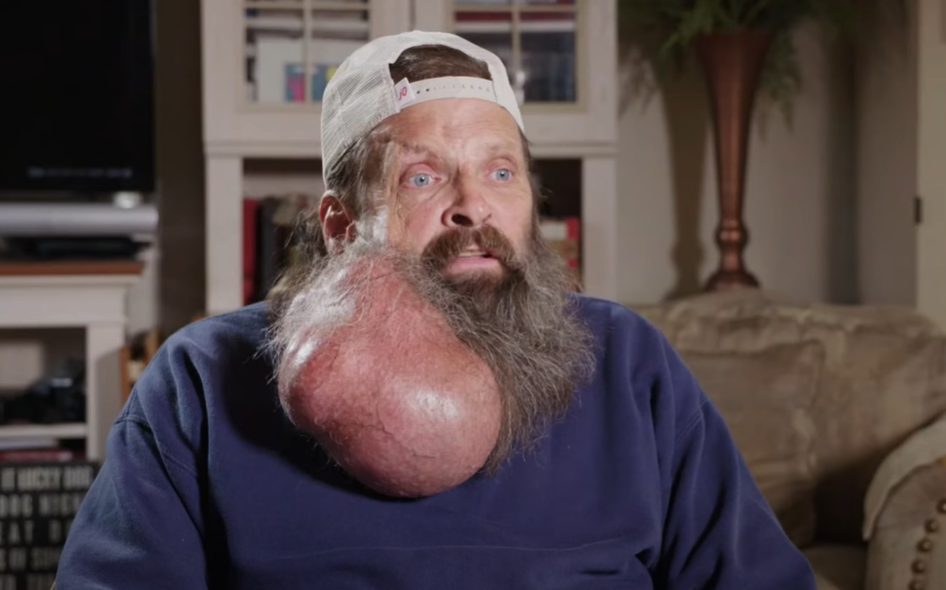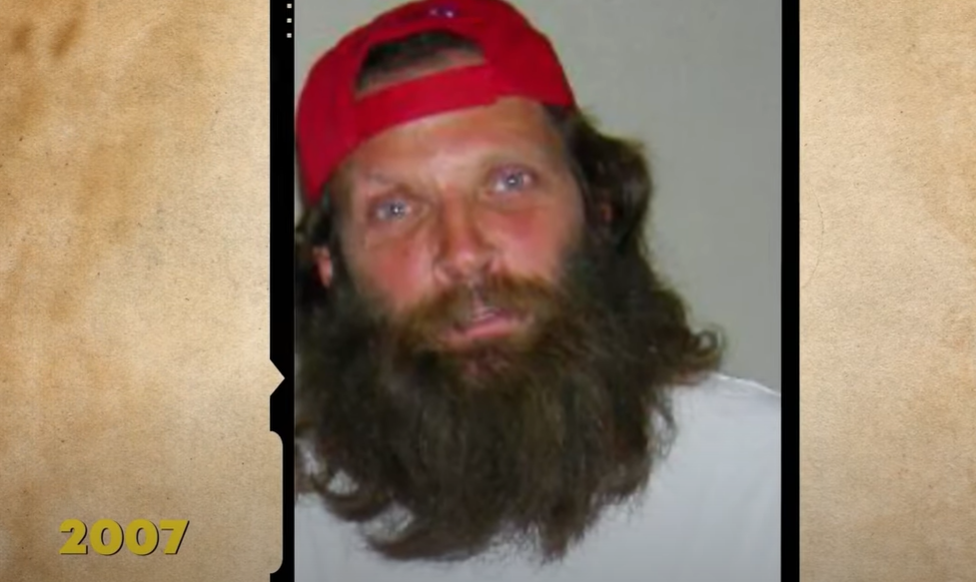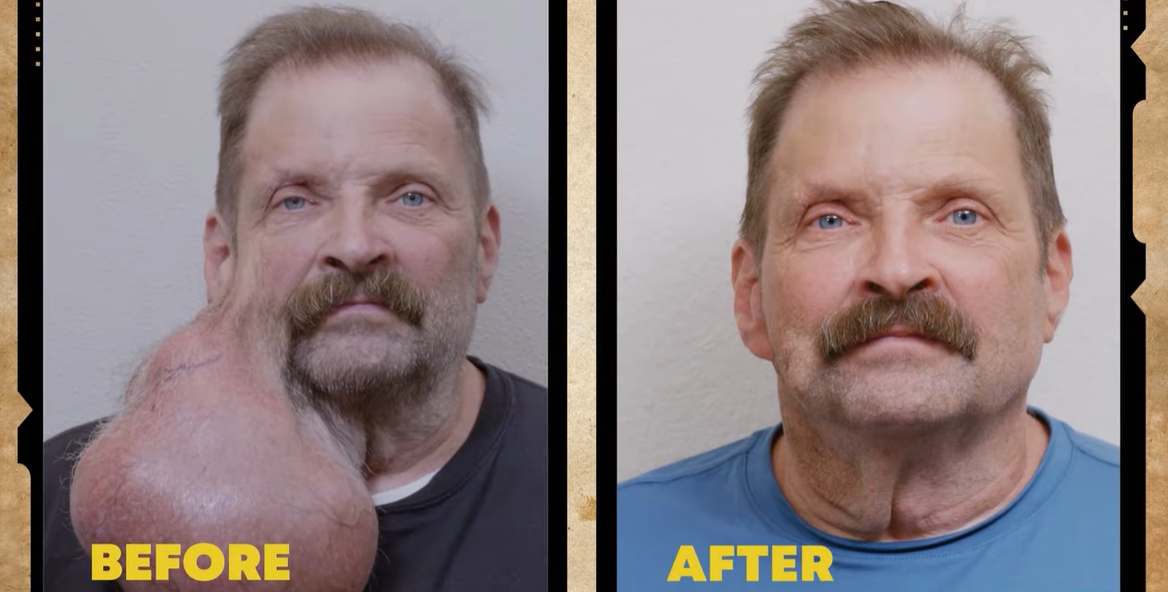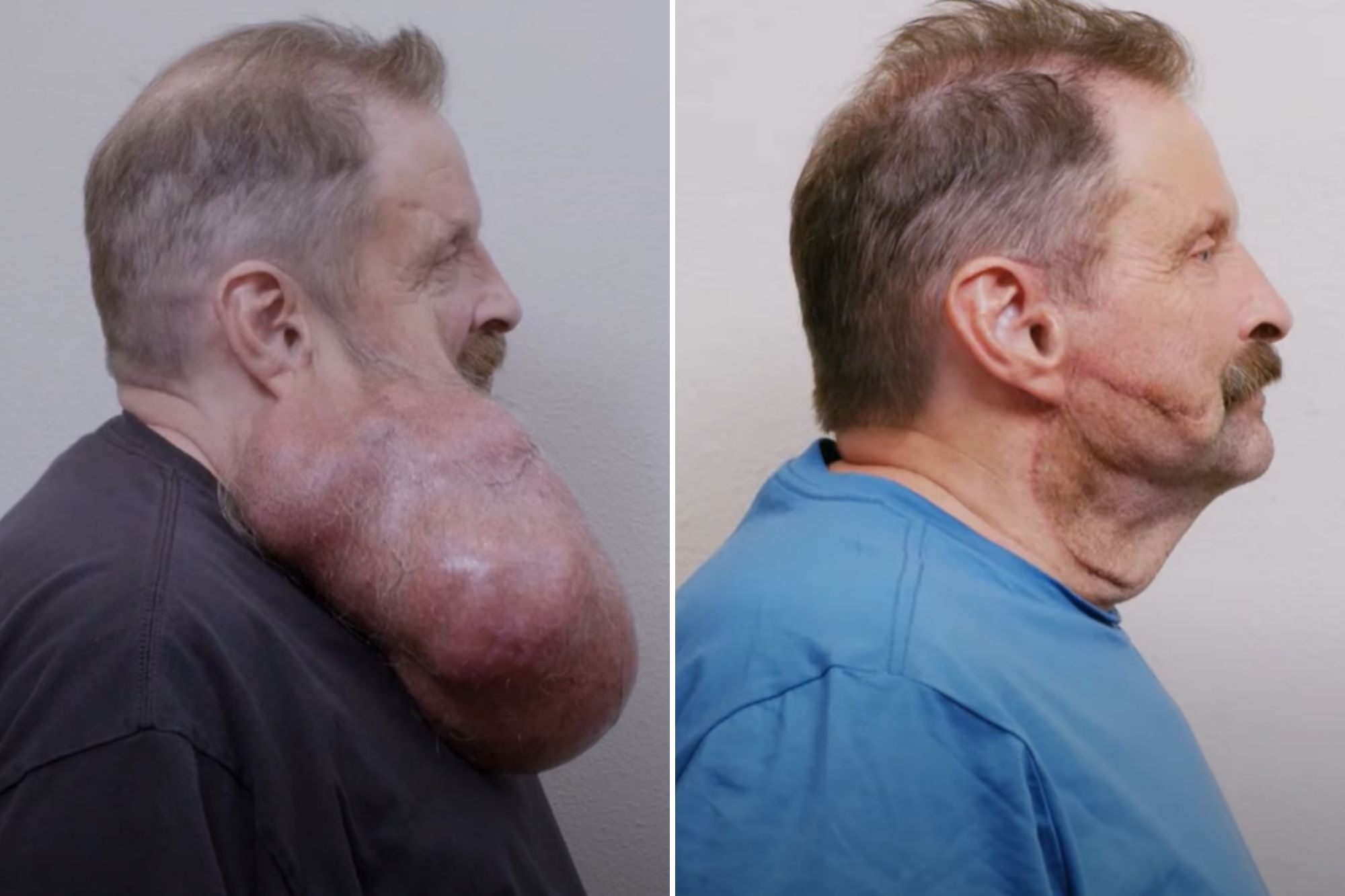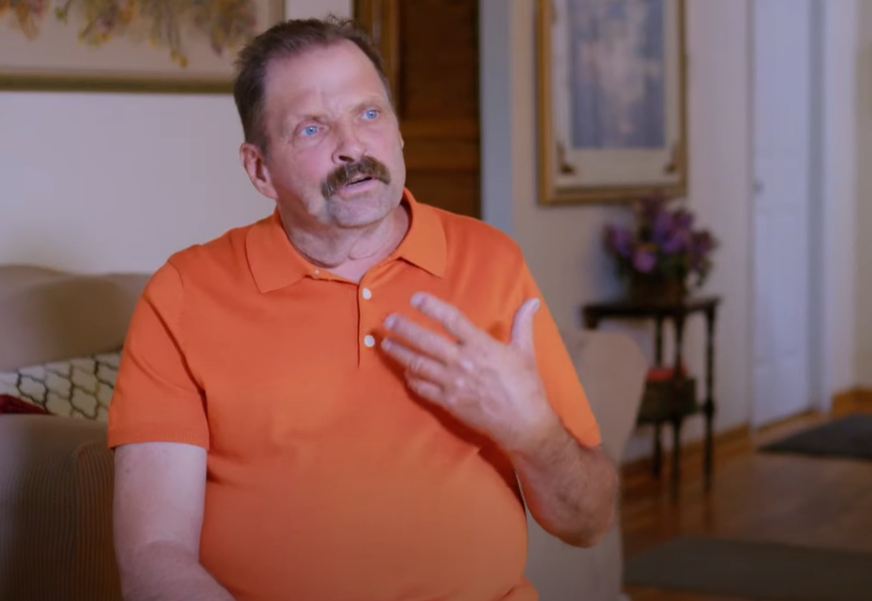The mass grew to weigh 5.5lb over 16 years, getting so large that Tim, 62, got throbbing headaches daily and felt like his face was “ripping”.
Appearing on TLC‘s Take My Tumor, Tim described struggling to eat, dress, bathe and even turn his head because of his “friendly little tumour”.
“It started as a little pimple on my ear back in 2007,” Tim, from Scottsdale, Arizona, recalled.
The car mechanic tried to squeeze it, but to no avail. Instead, the zit grew to the size of a pea.
“One morning I woke up and it was basically the size of a small Super Ball,” Tim said.
Turning to the internet for answers, Tim came to the conclusion that it was a sebaceous cyst – harmless round lumps that usually filled with fluid or pus, that usually pop up on the face, neck, chest or back.
They don’t usually need treatment unless they get infected or interfere with your daily life.
But all the while, Tim’s lump was getting bigger, from racket ball to tennis ball to watermelon sized.
“It’s basically blood vessels and cartilage all intertwined in a dead mass,” Tim said.
The 62-year-old got tension headaches from the weight of the tumour pulling on his face and neck, verging from “mild to extremely painful” depending on how much he moved throughout the day.
“There are times where I’ve moved and [I] feel like something is pulling or ripping,” Tim revealed.
Due to his line of work, Tim’s tumour could get pretty grimy and he was constantly concerned about keeping it clean and trying to avoid getting open sores “from the friction of it bouncing around”.
The growth – which a friend nicknamed ‘Little Timmy’ – began to make it hard for Tim to get dressed, as garments had to be stretched out enough to be pulled over the tumour.
He could only eat his meals standing up, otherwise the tumour would hit the table or bump into his food.
Sleeping also became hard, as he had to position the tumour just so, so it wouldn’t crush his neck.
When the tumour was there, damn that thing was ugly. It’s good to have it off. Sixteen years was long enough
But Tim couldn’t get the tumour removed as he didn’t have health insurance or enough money saved to get the surgery done.
When head and neck surgeon Dr Ryan Osborne reached out to him, Tim was hopeful he’d finally be able to live tumour-free.
He flew to meet the Los Angeles-based surgical oncologist, who suspected the mass was coming from Tim’s parotid gland – the gland that makes saliva.
Dr Osborne said having a tumour on the parotid gland wasn’t “really that unusual”.
But one Tim’s size?
“Very unusual,” the surgeon stated.
“I would say the average size is probably like a walnut,” Dr Osborne added. “Tim’s looks like a watermelon.”
The surgeon’s biggest concern wasn’t removing mass – he worried that the dissecting the facial nerves from the tumour during surgery could cause nerve damage, resulting in facial paralysis.
Dr Osborne warned Tim that he may not be able to move the right side of his face or make expressions for about six months following the surgery.
What is a pleomorphic adenoma?
Pleomorphic adenomas are benign tumours that can develop on your salivary glands, particularly the parotid gland.
Sometimes, the tumours can become cancerous.
For that reason, healthcare providers typically recommend surgery to remove them. Part or all of the affected gland will be removed.
Once removed, pleomorphic tumors rarely come back.
Pleomorphic adenomas are rare, affecting an estimated 3 per 100,000 people in the US.
That being said, they’re still the most common type of benign salivary gland tumour.
Pleomorphic adenomas may appear:
- In the area in front of your ear (pleomorphic adenoma of parotid gland)
- Under your jaw (pleomorphic adenoma of submandibular gland)
- On your hard or soft palate (small salivary glands)
These tumours grow very slowly, so you may not have symptoms right away.
Symptoms include:
- A single painless lump under the skin near your jaw, by your ear or in your mouth
- The lump may feel soft or firm
- Typically, the lump will move when you push on it with your fingers
Most pleomorphic adenomas measure between two centimeters – about the size of a peanut – to 6 centimeters, about the size of an egg.
Without treatment, however, pleomorphic adenomas may grow to be quite large, measuring as much as 35 centimeters, which is approximately 13 inches.
Source: Cleveland Clinic
While the mechanic wasn’t “overly thrilled” at the prospect of facial paralysis, he was “confident” the surgeon would be able to “do what he needs to do”.
But Dr Osborne also worried Tim’s tumour might be cancerous, as there was a slight chance the cells could have mutated and become malignant over the years.
Tim said: “It’s the first time that I’ve had anyone really say that there is a possibility that it’s cancerous.
“It kind of throws a little shadow over the parade, but there’s not a damn thing I can do to change it.”
Two days later, Dr Osborne and plastic surgeon Dr Jason Hamilton, operated on Tim’s face and neck for almost five hours.
Dr Osborne was able to identify and avoid major facial nerves and remove the entire mass, while Dr Hamilton reconstructed Tim’s cheek so that it didn’t appear concave.
To his relief, Tim woke up able to smile and move his face.
And he got the good news that his tumour wasn’t cancerous and was “consistent with a benign parotid tumour called a pleomorphic adenoma”.
Seven weeks after his surgery, Tim was able to get his first real shave in two decades.
“A few months ago, the tumour was wearing me down.
“Since surgery, I feel lighter. I’ve had zero pain. It has been far easier than I expected.
“When the tumour was there, damn that thing was ugly. It’s good to have it off. Sixteen years was long enough.
“Everywhere I go, everybody’s really happy for me.”
